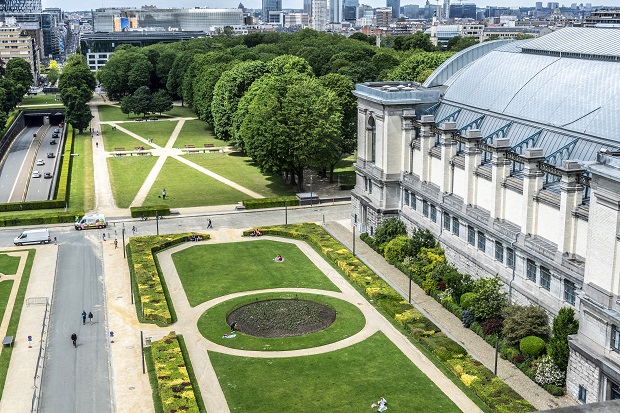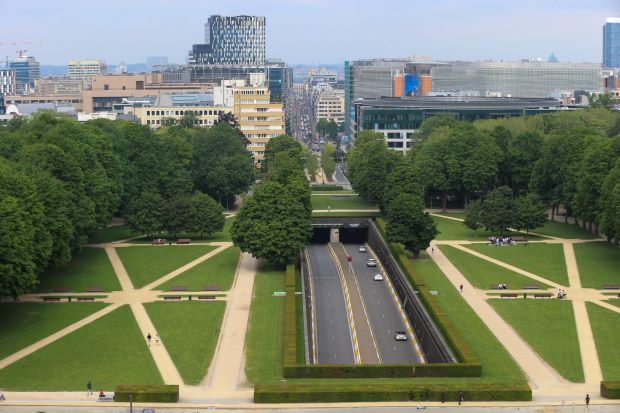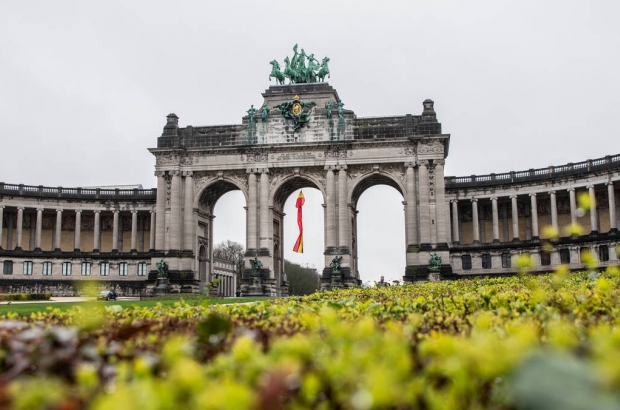- Daily & Weekly newsletters
- Buy & download The Bulletin
- Comment on our articles
Cinquantenaire 2030: Belgium’s ambitious bicentenary project to transform park and museums
Belgium is to celebrate its 200th birthday bicentenary in 2030 with a flagship anniversary project: a major overhaul of the capital’s Cinquantenaire park and museum quarter.
With an initial budget estimated at around €155 million, Cinquantenaire 2030 is described as the most ambitious heritage project in Europe. On a lighter note, organisers say it will give Brussels its own Central Park.
Cinquantenaire is a symbolic choice to spearhead Belgium’s 200th birthday celebrations. The 30-hectare green space and museum buildings opened in 1880 to mark the country’s 50th anniversary. The emblematic triumphal arc was constructed later, in 1905, to honour Belgium’s economic prowess.
For the 2030 makeover, the park should become "a site that no longer looks to the Belgium of the 19th century, but faces the Belgium of the future," said state secretary for science policy Thomas Dermine.
He was joined by a line-up of federal and regional ministers from across the political spectrum at the Royal Art and History museum to unveil the plans for the transformation. The overriding aim is for Belgium’s leading museum park to be turned into a national and international socio-cultural and scientific beacon.
Also in attendance was European commissioner Johannes Hahn, underlining the international significance of the project due to its location bordering the EU quarter. The plans reflected “a true Belgo-European cooperation” he said.
Prime minister Alexander De Croo conveyed his backing with the message: "Together, we want to make Cinquantenaire Park a place where culture and science merge, where everyone can meet."

The master plan includes integrating the park within the European district and forming an east-west axis with the Royal Park, also linking it to other related institutions, such as the Museum of Natural Sciences.
Three museums currently dominate the site: the Royal Museum of the Army and Military History, the Royal Art and History Museum and Autoworld, plus the Royal Institute of Artistic Heritage. They will be transformed into two hubs, focused on innovation and heritage.
“We have the opportunity to transform the historic site into a campus of museums and institutions that share the stories of a society rich in diversity, with exhibitions that inspire future generations and institutions that offer a platform for research and encounter in the heart of Europe,” added Dermine.
In addition to the renovation, extension and overdue modernisation of the museums, the park is to be refurbished. As it’s situated in Etterbeek, the municipality’s deputy mayor Vincent De Wolf joined the conversation, pointing out that for the project to become a reality, "we must fully involve the inhabitants who surround the Cinquantenaire."
It’s viewed as an opportunity to tackle Belgium’s colonial history as the park contains monuments linked to the Congo. “These would be the subject of discussions with the communities involved,” said Dermine, when questioned on the subject.
"But removing these traces of the colonial past is not the right solution, because we would then erase the opportunity to use them to explain behaviours that seem to us to be out of place with regard to our current values."

One park improvement that has sparked a wave of support is the planned covering of the stretch of Avenue de Tervuren traffic tunnel that splices the park in two. A competition is to be launched by the European Commission for young architects to propose solutions to remove this gaping eyesore.
Another priority would be to step up security in the park. A series of sexual assaults have occurred at the site over the past couple of years. New planting will reflect climate change and warmer temperatures as part of a sustainable approach to the overhaul.
Some refurbishments have already started, including the renovation of museum roofs and the installation of LED lighting to illuminate the arches at night.
Before the bicentenary in 2030, the Royal Museum of Art and History will host the Year of Art Nouveau and an exhibition on Austrian architect and designer Josef Hoffman from October 2023. Two large-scale projects exploring art, science, heritage and innovation are scheduled for 2024, the year that Belgium holds the presidency of the council of the EU.
The €155 million budget for the transformation includes €48 million to renovate the buildings on the site, €18 million for the park and €88 for the study and master plan. Over €80 million will be invested by Beliris, a cooperation between the Belgian government and the Brussels-Capital Region aimed at the promotion of Brussels as the Belgian and European capital. The remaining €75 million originates from the Régie des Bâtiments, a government department that manages buildings owned or leased by the nation.
Managing the project is the non-profit Horizon 50-200, under the banner Cinquantenaire 2030.
Photos: ©Belga/Nicolas Maeterlinck; Cinquantenaire 2030









